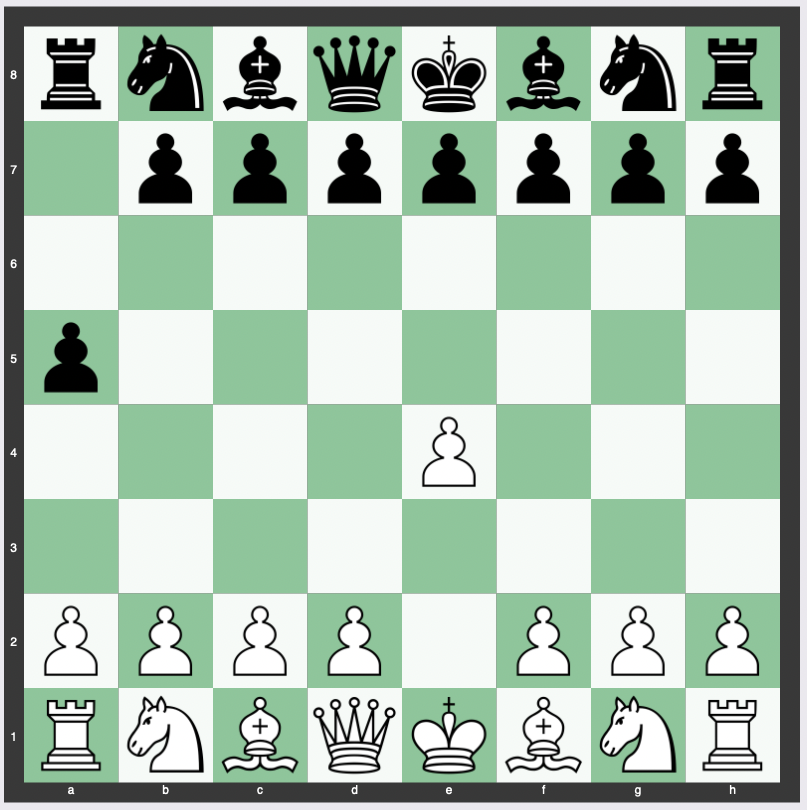The Corn Stalk Defense, marked by the move 1…a5, is a rather unconventional chess opening, typically employed as a surprise weapon or to lure an opponent into unknown territory.
Here’s we’ll look at the move order, the underlying theory, strategy, and purpose, the various variations, the historical development, its suitability for different levels of players, and its prevalence at the Grandmaster level.
Move Order of the Corn Stalk Defense
The move order of the Corn Stalk Defense is:
- e4 a5
ECO B00 Corn stalk defense (White perspective)
The move 1…a5 is what characterizes the Corn Stalk Defense.
It’s a response to the classic opening move 1.e4.
Theory, Strategy, and Purpose of the Corn Stalk Defense
The Corn Stalk Defense seems counterintuitive at first glance. The 1…a5 move develops a pawn on the edge of the board, which is generally considered an inefficient strategy.
However, it can serve specific tactical purposes.
For instance, it may disrupt an opponent’s prepared lines, leading them into less familiar terrain.
The main drawback of this opening is the early and potentially unnecessary development of a peripheral piece, which can lead to a loss of tempo or an awkward pawn structure.
Variations of the Corn Stalk Defense
Although the Corn Stalk Defense is mainly characterized by the move 1…a5, there can be several variations depending on the opponent’s response.
These variations can lead to a variety of complex middlegame positions.
The response to 1…a5 may dictate the course of the game, and the player using the Corn Stalk Defense must be ready to adapt to various scenarios.
History of the Corn Stalk Defense
The Corn Stalk Defense was not coined in modern times.
United States chess player Preston Ware played the Corn Stalk in eleven recorded tournament games from 1880 to 1882, winning four and losing seven.
Despite its unconventional nature, it has appeared sporadically in tournament play over the years, mostly as a surprise weapon rather than a mainstream opening strategy.
Is the Corn Stalk Defense Good for Beginners or Intermediates?
The Corn Stalk Defense is generally not recommended for beginners as it requires a profound understanding of the resulting positions and a flexible approach to adapt to the opponent’s responses.
For intermediate players, it might be an interesting choice as an occasional surprise tactic, especially if the player has studied the possible variations and is prepared to face the ensuing complexities.
How Often Is the Corn Stalk Defense Played at the Grandmaster Level?
The Corn Stalk Defense is rarely played at the Grandmaster level.
Top players often favor openings that conform to established principles and provide a solid foundation for the middlegame.
While the Corn Stalk Defense can create interesting and unbalanced positions, the inherent risks and the opening’s unsound reputation make it an infrequent choice among elite players.
Conclusion
The Corn Stalk Defense is a fascinating, though unconventional, opening that has intrigued chess enthusiasts for over a century.
While not widely accepted due to its early development of a peripheral piece, it serves as a reminder that creativity and surprise can still have a place in the game of chess.
Best suited for intermediate players seeking to catch an opponent off guard, the Corn Stalk Defense continues to be an interesting footnote in the vast and rich landscape of chess openings.


